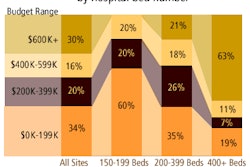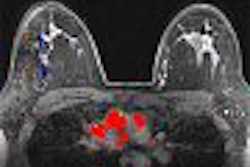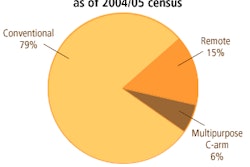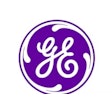The Asian digital x-ray market produced sales of $313.6 million in 2005, and is expected to grow at a compound annual growth rate (CAGR) of 12.4% to reach over $700 million in revenue by 2012, according to a study recently released by market research firm Frost & Sullivan.
In key market trends, medical facilities in China are encouraged, via higher reimbursement rates, to use digital x-ray systems instead of film, according to research analyst Subha Basu, Ph.D. He spoke during an industry briefing last week.
In addition, local distributors are manufacturing complete digital radiography (DR) systems utilizing foreign-made digital detectors, thereby leveraging internal distributor networks, he said.
“This provides ample sales avenues through extensive local distribution networks, while also bypassing international trade costs associated with foreign commerce,” Basu said. In addition, healthcare facilities benefit from having high- and low-end ranges of digital x-ray systems to cater to each hospital’s individual needs, he said.
Frost & Sullivan included China, Japan, South Korea, and Southeast Asia in the study. DR equipment included flat-panel, charged-couple devices (CCD), complimentary metal-oxide semiconductors (CMOS), and storage phosphor-based DR systems. Computed radiography (CR) units were also included.
In other market trends, patient volume is playing a role in the sector’s development. Densely-populated countries such as China and Japan require systems with high throughput, a driving factor for digital x-ray adoption, Basu said. In addition, some facilities have as many as 100 patients per day for simple x-ray procedures such as chest and extremities.
Wealthier clients also want facilities to have the most up-to-date systems, and are willing to pay an extra surcharge for advanced medical procedures, Basu said.
Booming markets such as China, South Korea, Japan, Hong Kong, and Taiwan have capital and IT infrastructure to readily adopt DR or CR, he said.
“These technologically advanced countries have electronic information management systems already installed in medical clinics and hospitals,” he said. “Governments are willing to invest in the high initial costs in DR or CR systems for long-term ROI and cost savings.”
Challenges
Challenges to the growth of the Asian digital x-ray market include reliance on healthcare policies in state-run governments, Basu said.
“Since governments are the largest buyers of technology, this makes the transition to digital environments more challenging,” he said.
Better IT infrastructure is needed in most Asian countries to implement DR/CR units, in addition to other digital modalities such as CT, MR, or PET, Basu said. The majority of patient and administrative functions are still managed in paper form in most of these poor countries, requiring lengthy lead times for implementation of electronic data storage.
Also, the high initial prices of DR systems hinder market penetration, particularly in poorer Asian countries. “As I’m sure you can imagine, currency trade ratios make economic impact of digital solutions nearly five to 10 times more expensive in Asia,” he said.
Drivers
In DR, healthcare policy changes in China are fueling the largest sales in all of Asia, Basu said. China is seeking to transition to international healthcare standards following agreements with the World Trade Organization and the World Health Organization.
Local manufacturers that assemble DR systems have lower production costs and greater distribution networks, with average selling prices that are two to three times lower than foreign systems, he said.
In CR, the high number of CR units installed in Japan influence neighboring countries to install the technology, he said.
“Japan has a storied history of influencing other countries to adopt technological breakthroughs,” he said. “Additionally, Japanese medical facilities are constantly buying or upgrading CR systems each year.”
The adoption of PACS technology in Asia is also driving CR sales; tech-savvy IT countries such as Japan, South Korea, China, Taiwan, and Hong Kong have IT infrastructure in place to support digital systems, he said.
By Erik L. Ridley
AuntMinnie.com staff writers
February 17, 2006
Related Reading
Cardiovascular disease growth pushes European digital cath lab implementation, February 2, 2006
Cost-cutting drives European SR adoption, January 20, 2006
PACS drives European CR, DR market, January 10, 2006
Frost: European refurbished equipment market faces challenges, June 15, 2005
Medical display market shifts toward LCD, June 1, 2005
Copyright © 2006 AuntMinnie.com




















